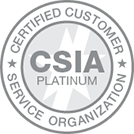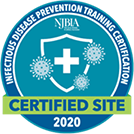We know that marketing an event can be tough. Aside from having to worry about planning the event itself, you also need to worry about generating enough interest in it. However, the world’s current reliance on social media has made the harsh world of event marketing a little bit softer. Here are 10 steps for marketing your event online.
Weeks Before the Event
1. Get Visual
It’s no secret: visual posts do best on social media. According to a 2013 study by MDG Advertising, on average 94% more total views are attracted by content containing compelling images. Therefore, it’s in the best interest of your event to create some type of visual teaser to gain traction in the social media world.
Our suggestion? Start out by creating a meme, infographic, gif, or other piece of mentally stimulating content to rally interest in your event. Fun and interesting visuals that can be passed around will do much better than a plain old flyer. Use your meme, infographic, or gif as a platform to direct users to concrete info, such as the event’s whens, wheres, and sign-up forms.
2. Hashtag It
We live in the era of the hashtag; take advantage of it! Hashtags are awesome for linking people, photos, and just spurring general interest in a particular topic. Being witty with your hashtags will draw more engagement from your target audience. And by creating a custom hashtag for your event, you’re establishing a place for that target demographic to connect and engage over your event. The phrase “jump on the bandwagon” exists for a reason!
3. Find an Influencer
The power that a social media influencer can have is amazing. According to this study by Nielsen, 92% of consumers around the world say they trust earned media, such as word-of-mouth and recommendations from friends and family, above all other forms of advertising. Though social media may not be face-to-face interaction, consumers have trust in the people they follow. Finding a well-known name in your field to support or endorse your event will extend your reach, as well as heighten enrollment in your event.
4. Make it Competitive
Having a contest or giveaway is another great way to spark interest in your event. Here’s the bottom line: people love competition and people love free stuff. Creating a social media contest that will trickle its way into your event will bring a fair amount of interest into it. We like the idea of a tag-a-thon, where users can tag friends and re-share your content for entry into a raffle.
5. Start Leaking Content, ASAP
Once you’ve created quality visuals, determined a witty hashtag, reached out to potential influencers, and drawn out a competitive edge for your campaign, start dripping your content onto social media. Obviously, the earlier you are able to plan out these aspects of your campaign, the better. We suggest dripping content as far as 3 weeks in advance.
6. Spread the Word
After you’ve launched your first social media post, get your teammates to help spread the word. Here in our office, we try to devote at least 15 minutes a week to having our entire team sit down and share our content. In one 15-minute sharing session, we’ve seen our average post interaction rates as much as quadruple! If each team member were to share the event to just one of his or her social media networks, imagine how much exposure it could receive.
Days Before the Event
7. Go Backstage
As our chief marketing technologist always says, “people are voyeuristic.” Essentially, they want to know what’s going on behind the scenes. As your event is nearing, use social media to document your set up. Do it in a way that teases your viewers, giving them just enough information to want to see more. Comical team interviews or other humorous ways of building up the event are great for generating interest.
During the Event
8. Tag Upon Arrival
Giving your attendees an incentive to tag themselves at your event will make it more fun for them and give you extra traction on social media. Think of something creative, whether it is part of your contest in Step 4 or something completely new altogether. We like the idea of a photo contest, where attendees can enter their personal event photos via social media for a chance to win a unique prize.
9. Have Your Bases Covered
Once the event has actually started, make sure you’re giving it the exposure that it deserves! You’ve worked hard in establishing this campaign; don’t cut it short by lack of documentation. It may be easiest to have one team member assigned to each social media platform, however, if you use a social media connectivity interface such as Hubspot, you’ll be able to share single updates to your various platforms all at once. Apart from just social media documentation, it is important to have someone recording all of the information from your event, whether it be via video, photo, or plain old paper and pen. I assure you, this will help greatly when it comes to Step 10!
After the event
10. Seal It in Stone
When all is said and done, polish the event off by creating an asset from the info shared there. This could be a blog post, infographic, or some other type of downloadable asset that your followership can access even if they weren’t able to make the event. This will allow your event to bring traffic to your website even after the event is already finished.
Obviously, these steps should be tailored to fit each event on an individual basis, but hopefully you’ve found some of these steps for marketing your event online useful. If you’re interested in reading more of our online marketing tips, be sure to check out the Business On Market St. Blog.
About our Guest Author:
Megan Turner is the head copywriter and marketing communications specialist at Business on Market St., a San Diego-based marketing agency specializing in inbound marketing strategy. Ms. Turner is in charge of running the Business on Market St. blog, where she enjoys writing about inbound marketing tactics and trends, as well as tips for online writing.




